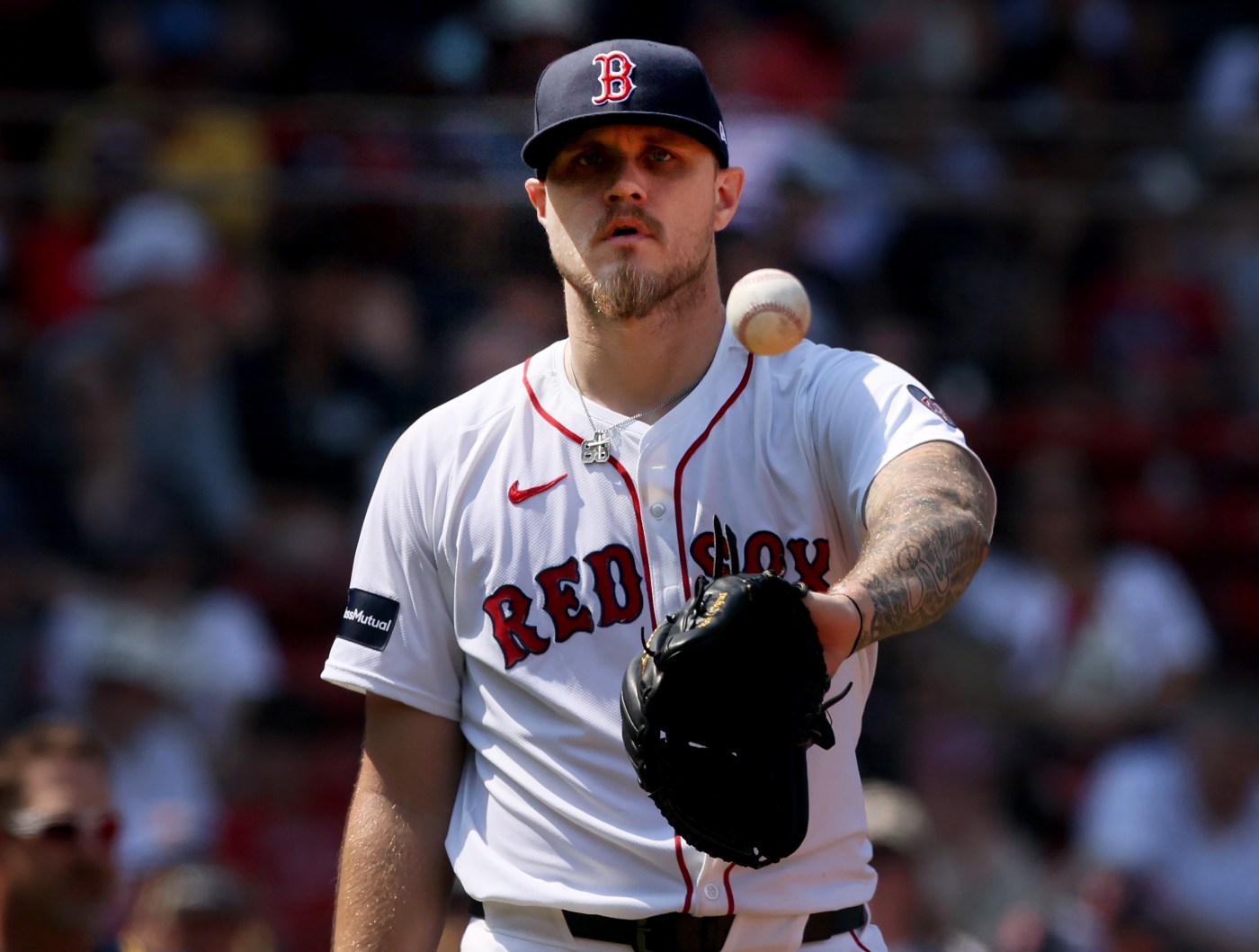
Red Sox Report Card: Homegrown trio answered Alex Cora’s call
During the first week of 2024 spring training, Alex Cora called out his young starting pitchers.
“I think there are certain guys here that need to take a step forward, and I’ve been very honest about it,” the Red Sox manager said. “When I got back in ‘21, everybody was talking about (then-prospects) Tanner and Crawford and Bello. Well, they’re here. And they gotta do the job.
“These guys are, they’re not veterans, but they’re not young anymore. They’re here, and hopefully they can take that step forward and become the guys that everybody envisioned five years ago or four years ago.”
“If you look to the history of the Red Sox when they’re really, really good, the rotation carries the pitching staff,” Cora said. “You cannot rely on the bullpen all the time. Somebody has to step up and go six, seven innings, more than once in a while. You get a lot of innings from the rotation, then you’re in a good spot.”
Despite suffering multiple season-ending blows early on, the rotation managed to exceed expectations and was a key reason the Red Sox remained in the Wild Card race until their 158th game. Bello, Crawford, and Houck became the organization’s first homegrown trio since 1987 to make at least 30 starts apiece.
Here’s how each individual starter graded on the rotation’s report card:
Brayan Bello: C
Bello received a contract extension during spring training and earned Opening Day starting honors, then underwhelmed for a significant portion of the season.
Though the right-hander answered his manager’s call for deep starts, going at least five innings 24 times and six or more in 11 of them – he struggled to keep runners off the bases and runs off the board. He set new career-highs in starts (30), innings (162 ⅓), and strikeouts (153), but his 4.49 ERA, 1.361 WHIP, 3.5 walks/nine, and 2.39 K/BB ratio were all worse than the season prior, and he issued 19 more walks over just 5 ⅓ additional innings. Only two of his 30 starts were scoreless, and he allowed multiple runs 22 times.
After missing nearly a month early in the season due to right lat tightness, Bello posted a 7.05 ERA over his first nine starts (35 ER, 44 ⅔ IP) and struggled to keep his composure on the mound. The Red Sox pushed his next start back, and at the end of that eight-day period, a more successful version of the righty emerged; he posted a 3.66 ERA over his remaining 16 starts of the year (37 ER, 91 IP).
Kutter Crawford: B
Crawford’s career year was an interesting mix. He finished the season with career-highs of 33 starts (tied for the MLB lead) and 183 ⅔ innings (9th in AL), but also gave up an MLB-leading 34 home runs, allowed the second-most earned runs in the AL (89), and took an AL-leading 16 losses. He looked like an All-Star in the first half, posting a 3.00 ERA over 20 starts, then pitched to a 6.59 ERA over his 13 starts after the break.
For several stretches throughout the season, he was one of the best pitchers in baseball. There were 14 homer-less starts, and 16 in which he allowed no more than two earned runs. He gave Boston 26 starts of five innings or deeper, including at least six 18 times and reaching or exceeding the seven-inning threshold four times. But when he got hit hard, he got hit really hard.
Cooper Criswell: B+
Criswell only had 12 career Major League games (37 2/3 innings) under his belt – and hadn’t made a start since 2022 – when the Red Sox signed him to a one-year deal last December. After beginning the season in Triple-A, he made his Red Sox debut on April 13 while several members of the rotation were injured, and ended up pitching in 26 games for the big-league team, including 18 starts and four games finished. Over a career-high 99 1/3 innings, he posted a 4.08 ERA, inflated by a trio of poor outings against the Orioles (twice) and Royals, who each charged him with 5-7 earned runs. He allowed no more than three earned runs in his other 23 outings, including seven scoreless and seven one-run performances.
Worth every penny of that $1 million.
Tanner Houck: A
Houck cemented himself atop the starting pitching pile this year. The righty, 28, was the ace of the rotation, posting a 3.12 ERA, the best mark by a Red Sox pitcher (minimum 30 starts) since his mentor, Chris Sale, in 2017. He set new career-highs in starts (30) and innings (178 ⅔), and became the first Sox starter to go to the All-Star Game since Sale in ‘18.
Among AL pitchers, Houck ranked in the top-10 in WAR, ERA and adjusted ERA+, FIP, and adjusted pitching wins. He excelled at inducing weak contact, in the 93rd MLB percentile in ground-ball rate, and led the AL with a 0.6 HR/9 innings. He was one of the only pitchers to throw a complete-game shutout this year, and did so on fewer than 100 pitches, a feat known as a ‘Maddux.’
There were some concerns about health late in the season, when the Red Sox pushed Houck’s start back over a week in mid-September, but he finished the season strong, allowing one earned run and one walk over his last two starts, including five scoreless innings in his final game. Asked if the righty will have to compete for a rotation spot again next spring, Cora chuckled and shook his head.
Nick Pivetta: B
In what was likely his final season in Boston, Pivetta was essentially the pitcher he’s been throughout his tenure: consistent in providing depth, with flashes of brilliance.
Despite missing time for a rare injury, he made 26 starts (and one relief appearance). He pitched to a 4.14 ERA over 145 ⅔ innings, three more than the previous season, and reduced his hard-hit rate by a whopping 4.6%. Though his strikeout rate dropped a 2.3%, he displayed significant improvement in another crucial area: his 2.2 BB/9 was his lowest since his sophomore season with the Phillies, and the best mark of his eight-year career by far.
Incompletes: Lucas Giolito, Garrett Whitlock, James Paxton, Richard Fitts
Giolito found out he needed internal brace surgery to repair his UCL during spring training, which ruled him out for the entire year.
Whitlock looked strong in his four starts, then went on the injured list, had an excellent rehab game, and needed season-ending internal brace surgery for what his doctor described as a “freak injury.”
After 18 starts – the last one being five solid innings against the Red Sox – the Dodgers designated Paxton for assignment and traded him back to his former team. The lefty’s ‘24 campaign ended five pitches into his third and final Red Sox start, when he suffered a partial tear of his right calf. Weeks later, he announced that he planned to retire.
It feels fitting to end with Fitts, the starting pitching prospect from last year’s Alex Verdugo trade, who was a promising part of this disappointing September. The 24-year-old righty debuted on Sept. 8 and began his big-league career with three consecutive scoreless starts of at least five innings, including filling in for Houck last-minute on a crucial Friday night at Yankee Stadium. He finally gave up his first career earned runs in his final outing of the season, the night Boston was eliminated from the Wild Card race, but it’s clear he’s just getting started.

